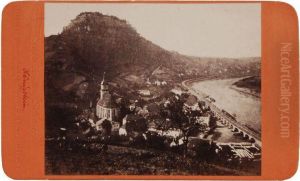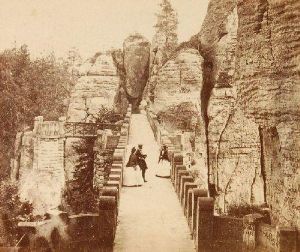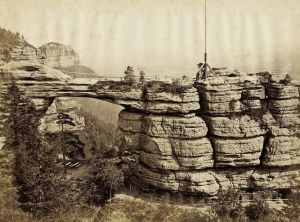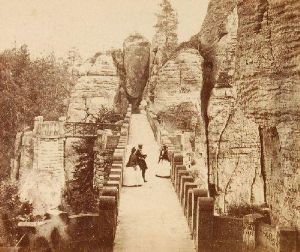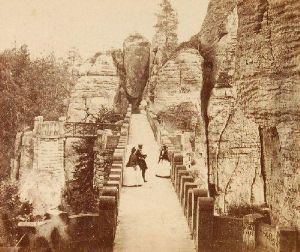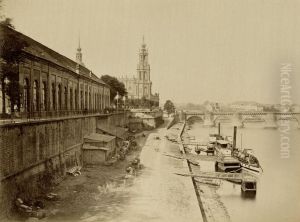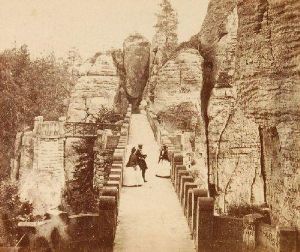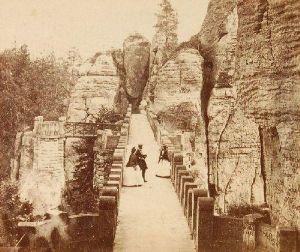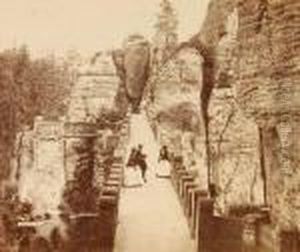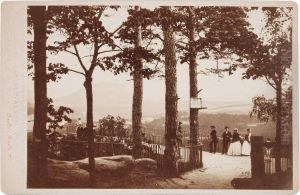Hermann Krone Paintings
Hermann Krone was a notable German photographer, scientist, and photography pioneer born on September 14, 1827, in Breslau, which is now Wroclaw, Poland. His contributions to the field of photography were significant during the 19th century, a time when this medium was still in its infancy and rapidly evolving. Krone received his first camera in 1843 and quickly became engrossed in the art and science of photography.
Initially, Krone worked as a daguerreotypist, a process which involved creating images on silver-plated copper. He opened his first studio in Leipzig in 1851, and by 1852, he had moved to Dresden, where he established a new studio that would become one of the most successful in Germany. Throughout his career, Krone was deeply interested in the technical aspects of photography and conducted numerous experiments to improve photographic processes.
He was a pioneer in the use of the collodion wet plate process, which was faster and produced more detailed images than the daguerreotype. Krone also contributed to the understanding and improvement of photographic chemicals and materials. His work in landscape photography was groundbreaking, and he was one of the first photographers to take pictures of the Saxon Switzerland region.
In addition to his photographic work, Hermann Krone was also an educator. He founded the first German school of photography in Dresden in 1855. He also published an influential textbook, 'Die photographischen Verfahren' (Photographic Processes), which was widely used by professionals and amateurs alike.
Krone's legacy includes a vast collection of photographs that offer a glimpse into 19th-century life and landscapes. He captured images of technological advancements, such as the construction of bridges and railways, as well as portraits, architecture, and nature.
Hermann Krone passed away on September 17, 1916, in Dresden, leaving behind a rich body of work that continues to be appreciated for its historical value and technical brilliance. His contributions to the development of photography as both an art form and a scientific pursuit have cemented his place as one of the early masters of the medium.
